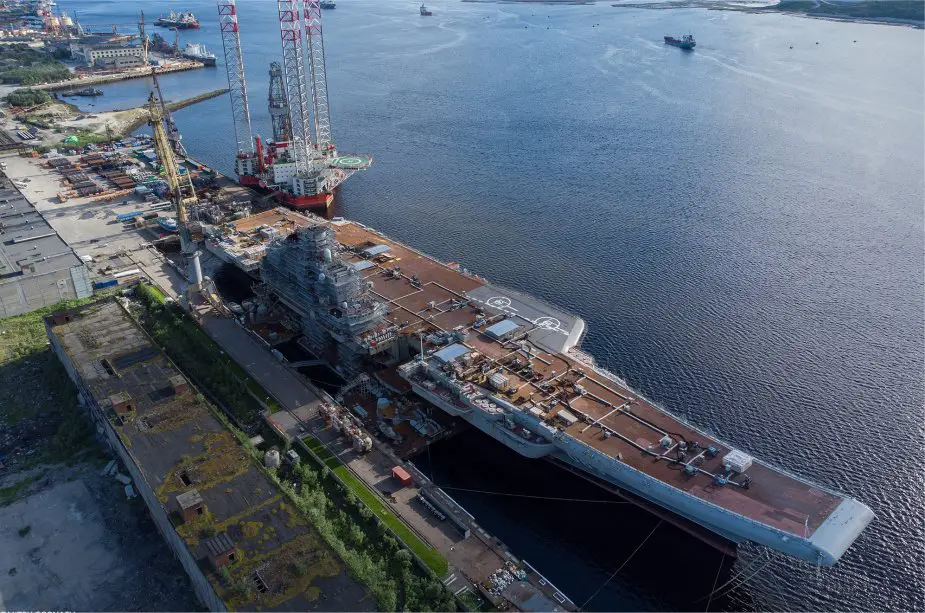Breaking news
Repairs to Russian aircraft carrier Admiral Kuznetsov will not be completed until early 2024.
According to information published by Tass on November 17, 2022, work to repair and upgrade the Project 1143.5 heavy aircraft carrier Admiral Kuznetsov (NATO reporting name: Kuznetsov-class) is proceeding on schedule, the ship may be delivered to the Russian Navy in the first quarter of 2024.
Follow Navy Recognition on Google News at this link
 Russian aircraft carrier Admiral Kuznetsov. (Picture source: Dmitry Gornaev)
Russian aircraft carrier Admiral Kuznetsov. (Picture source: Dmitry Gornaev)
Rakhmanov said at the Transport Week exhibition, answering a question from journalists about the potential commissioning of the aircraft carrier in the first quarter of 2024.
In early June, the aircraft carrier was placed into an upgraded dry dock of the 35th shipyard. The delivery of the ship was postponed to 2023.
USC Deputy CEO for Military Shipbuilding Vladimir Korolyov told TASS that the aircraft carrier Admiral Kuznetsov would complete the overhaul and upgrade in 2023 and rejoin the Navy the same year. According to him, the upgraded ship will get a completely new combat potential and will serve for at least another 10-15 years.
About the aircraft carrier
The design of Admiral Kuznetsov class implies a mission different from that of the United States Navy's carriers. The term used by her builders to describe the Russian ships is Tyazholyy Avianesushchiy Kreyser (TAVKR) – "heavy aircraft-carrying cruiser" – intended to support and defend strategic missile-carrying submarines, surface ships, and naval missile-carrying aircraft of the Russian Navy.
Admiral Kuznetsov's main fixed-wing aircraft is the multi-role Sukhoi Su-33. It can perform air superiority, fleet defence, and air support missions and can also be used for direct fire support of amphibious assault, reconnaissance, and placement of naval mines. The carrier also carries the Kamov Ka-27 and Kamov Ka-27S helicopters for anti-submarine warfare, search and rescue, and small transport.
For take-off of fixed-wing aircraft, Admiral Kuznetsov has a ski-jump at the end of her bow. When taking off, aircraft accelerate toward and up the ski-jump using their afterburners.
This results in the aircraft leaving the deck at a higher angle and elevation than on an aircraft carrier with a flat deck and catapults. The ski-jump take-off is less demanding on the pilot's body, since the acceleration is lower, but results in a clearance speed of only 120–140 km/h (75–87 mph) requiring an aircraft design which will not stall at those speeds.
The "cruiser" role is facilitated by Admiral Kuznetsov's complement of 12 long-range surface-to-surface anti-ship P-700 Granit (NATO reporting name: Shipwreck) cruise missiles, resulting in the ship's Russian type designator of "heavy aircraft-carrying missile cruiser".
Unlike most western naval ships that use gas turbines or nuclear power, Admiral Kuznetsov is a conventionally powered ship that uses mazut as a fuel, often leading to a visible trail of heavy black smoke that can be seen at a great distance.
Russian naval officials have said that the failure to properly preheat the heavy mazut fuel prior to entering the combustion chamber may contribute to the heavy smoke trail associated with the ship.




























